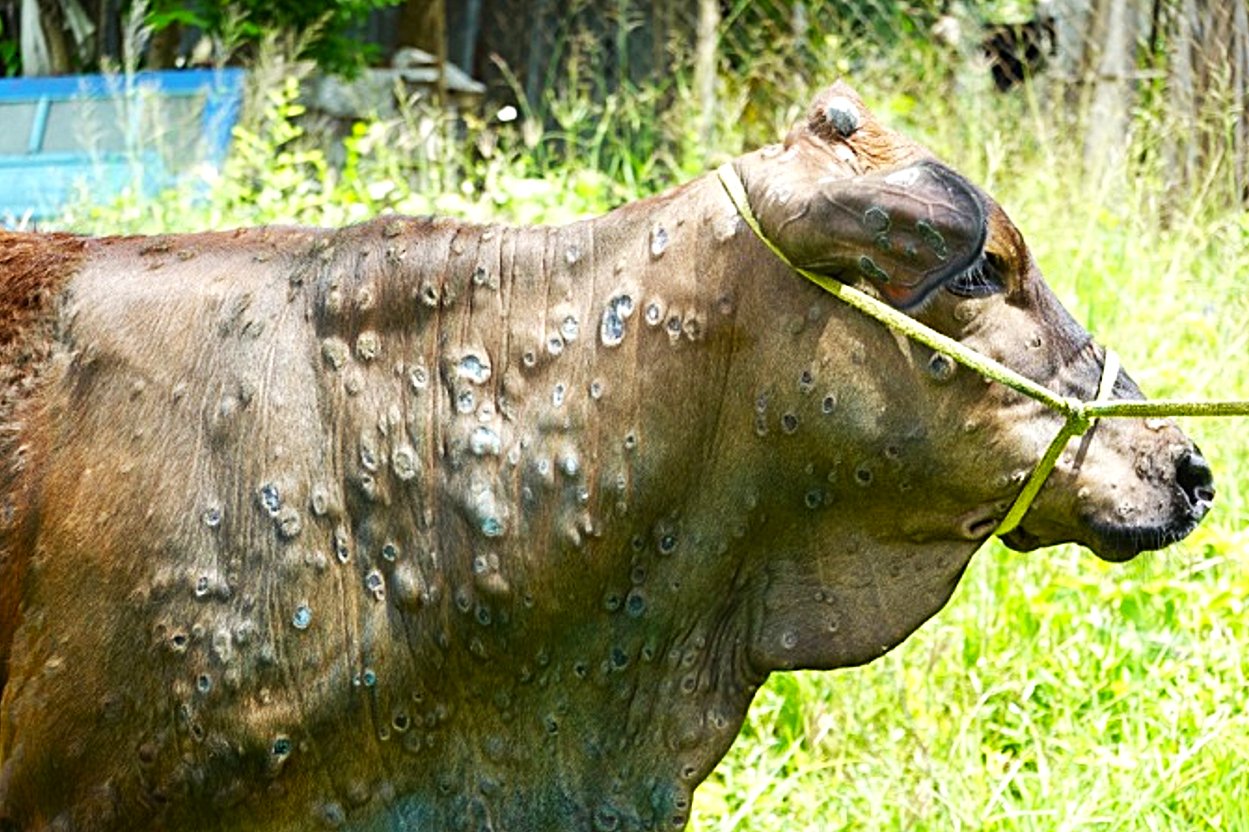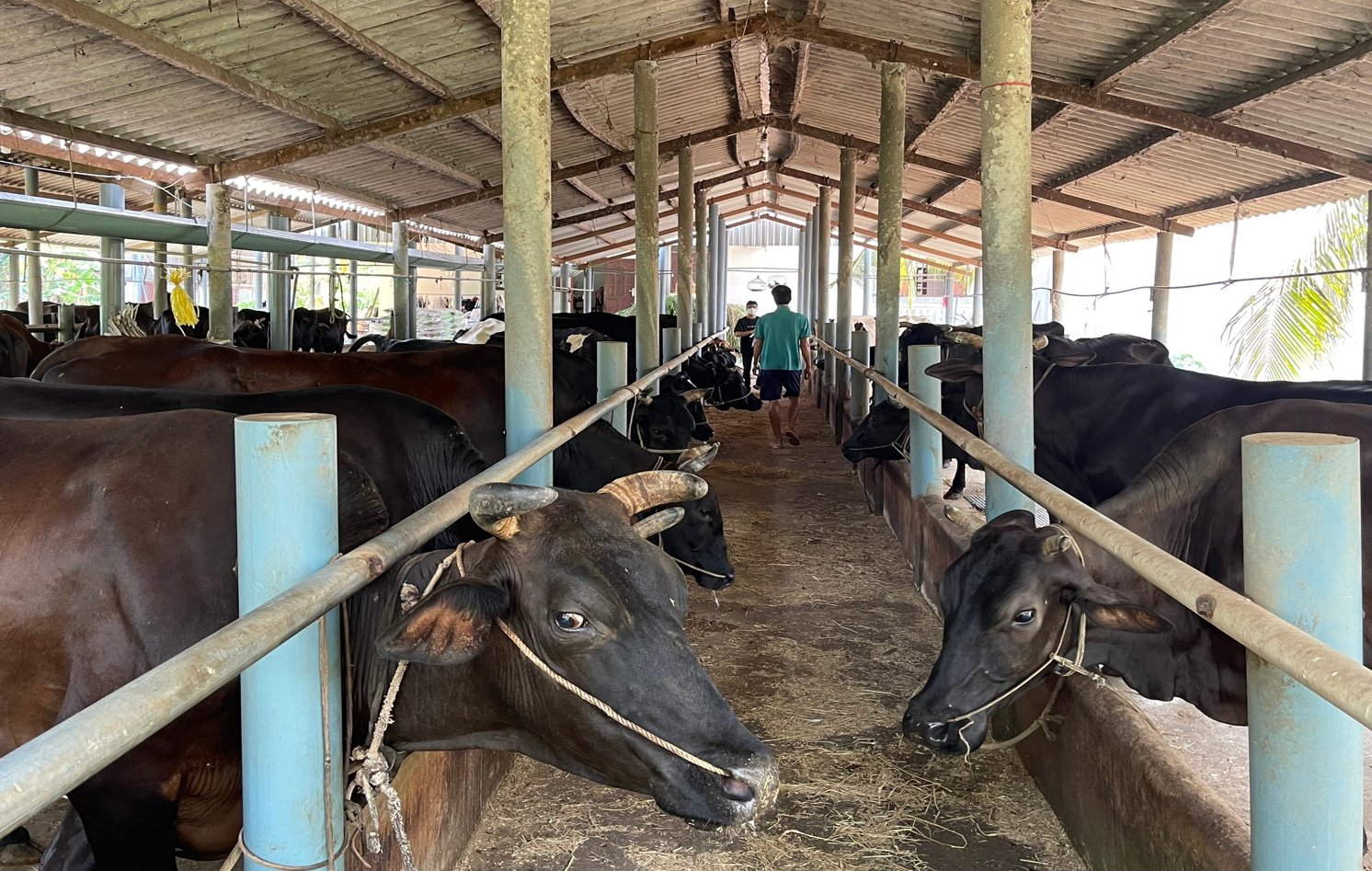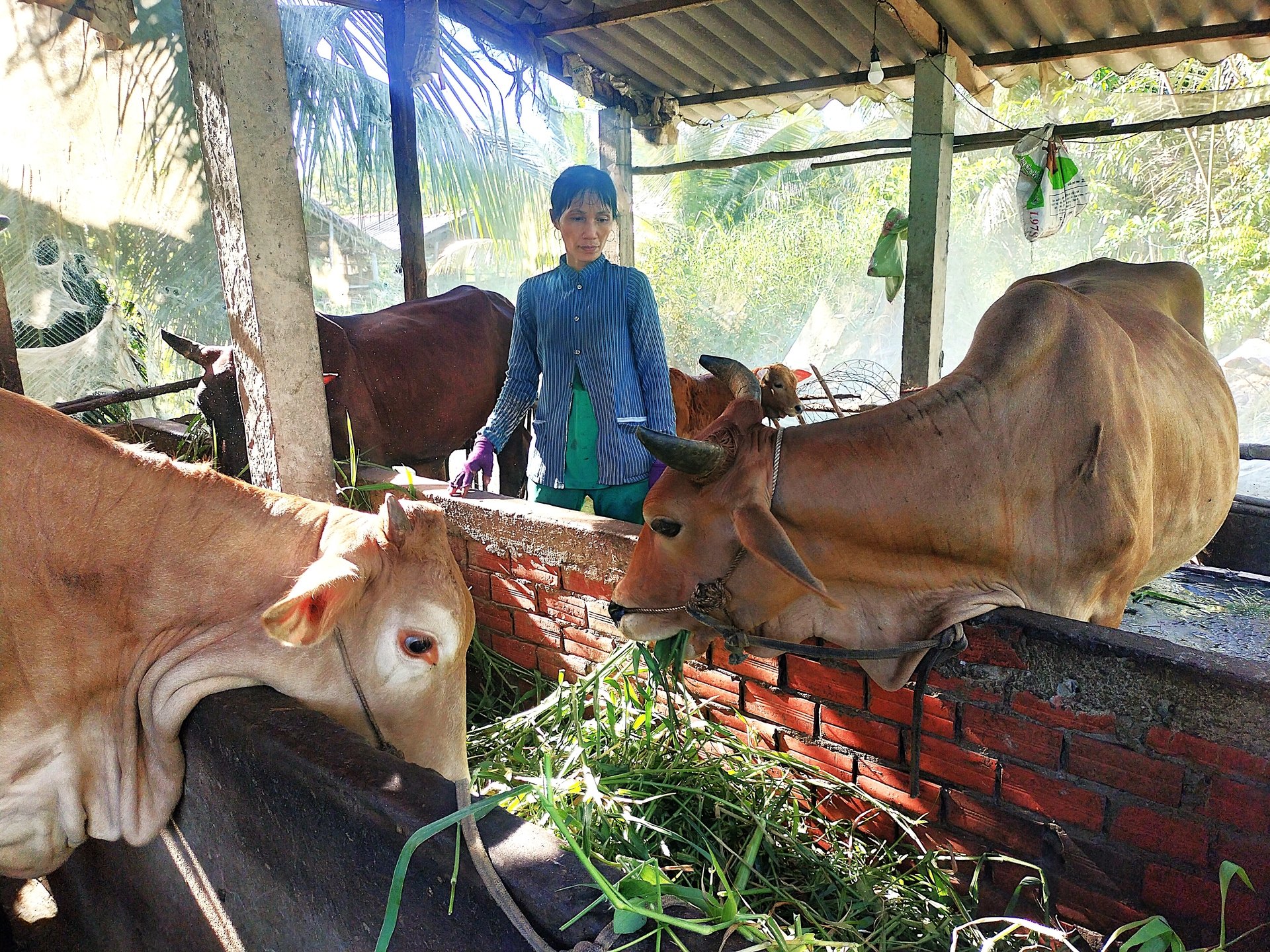November 27, 2025 | 05:05 GMT +7
November 27, 2025 | 05:05 GMT +7
Hotline: 0913.378.918
November 27, 2025 | 05:05 GMT +7
Hotline: 0913.378.918
According to MSc Le Quang Trung, working at the Department of Animal Health, College of Agriculture (Can Tho University), lumpy skin disease on buffaloes and cows is an infectious disease caused by the lumpy skin disease virus. It has a long life characteristic in the environment. It exists for months in peeling skin, soil, and necrotic tissue. In the blood, saliva, semen and milk of infected cows, the virus can exist for weeks.
The virus endures well with low temperatures. At 4 °C, it can exist for several months to one year, and at -80 °C, it can exist indefinitely and resist many common antiseptic substances such as hypochlorite, formalin 1%, ether, chloroform, alkaline, or strong acid solution. However, it is also very sensitive to high temperatures, easily inactivated at 55 °C after 2 hours or 65 °C after 30 minutes.

Cows suffer from lumpy skin disease with rough nodules on the skin. Photo: Minh Dam.
Lumpy skin disease occurs on a global scale. The transmission line is mainly through insects such as mosquitoes, flies, and ticks. The disease can also be transmitted by transporting buffaloes and cows with pathogens or through drinking troughs, feeding areas, milk, semen and direct contact. The incubation period is usually 4-14 days.
In the first phase, livestock experience high fever of 40 - 41 °C for 3 - 5 days accompanied by loss of appetite, reduced chewing, and loss of strength. Sick cattle shows signs of running nose and excessive tearing, swelling of lymph nodes in the head, neck, and groin. Some of them can have severe cough and shortness of breath if the virus attacks their lungs.
At the full distribution stage, the prime characteristic is the manifestation of hard nodules on the skin of the livestock with a size of 0.5 - 5 cm. The nodules can appear at the head, neck, shoulders, back, legs, breasts, and the area around the anus and genital organs.
As for the early disease, the skin of sick cattle has nodules containing fluid and may have ulcers, necrosis, and thick scales. Lymph nodes are swollen, and congested, may have yellow fluid or hemorrhage. The lungs are inflamed, and necrotic nodules appear. The liver, kidney, and spleen are swollen with scattered necrotic nodules. The subcutaneous tissue and muscle are inflamed or necrotic in areas with nodules.

The farm performs biosafety production and full vaccination. The healthy cows are strong against lumpy skin disease. Photo: Minh Dam.
According to MSc Le Quang Trung, using vaccines is an effective prevention method. There are currently three types of vaccines recommended to prevent lumpy skin disease for buffaloes and cows, including Mevac LSD (Egypt), Lumpyvac (Türkiye), and AVAC LSD Live (Vietnam). "All three types of vaccines have the ability to maintain antibody content until the twelfth month after vaccination in beef cattle and 50 days after birth for the calves. Farmers should perform vaccination for livestock as per instruction at the right time,” he said.
Through the study of lumpy skin disease in the cow herd of Tien Giang province, MSc Le Quang Trung summarized four risk factors associated with lumpy skin disease on local cows, including the calf factor (under 6 months old), small farming scale (1 -3 heads/farm), no vaccination and zero use of disinfectant.

People often use nets to cover the cattle farm to avoid fly and mosquito bites. Photo: Minh Dam.
According to Dr. Tran Ngoc Bich, Head of Department of Animal Health, College of Agriculture (Can Tho University), this disease is not transmitted to humans. “There are many ways to cut and reduce the spread of lumpy skin disease virus. Farmers should pay attention to performing hygiene control and ensure livestock production safety. The prerequisite is to carry out vaccination for buffaloes and cows,” he said.
From the point of view of Nguyen Cong Thinh, Deputy Director of Cho Gao District Agricultural Service Center, the application of biosafety measures to control the transmission line is an important factor in the prevention of epidemics. However, the deployment in small livestock households faces many difficulties due to limitations of resources and facilities.
It is thus necessary to have specific support policies from local authorities, and at the same time strengthen coordination between veterinary agencies, breeding households and related organizations to ensure the effectiveness of disease control.
Statistics show that lumpy skin disease appeared in 2021 at 10/11 district units of Tien Giang with 374 households with infected cows. 595 cows were infected and 27 died. From 2022 to 2024, only 5 - 6 districts recorded cases of cows suffering from lumpy skin disease. The number of sick cows reduced to 10 - 29 heads, and the cases of death came down to 1 - 3 heads. Since the beginning of 2025, only one cow has been infected with the disease and promptly destroyed.
Translated by Samuel Pham

(VAN) The Mekong River Commission adopts the 2026 - 2030 Strategic Plan with a people-centered approach.
/2025/11/26/1720-1-200855_132.jpg)
(VAN) Viet Nam and Japan have many conditions to expand cooperation on climate change adaptation, particularly in disaster risk management based on advanced technologies.

(VAN) The strong development of digital technology and artificial intelligence is opening up opportunities to transform science and technology into a 'Magic eye' for disaster forecasting and early warning.

Applying vaccines and proactive disease prevention helps pig herds stay healthy, maintain productivity, reduce risks, and decrease reliance on antibiotics in modern livestock farming.

(VAN) Many advanced agricultural technologies and products were shared at the Viet Nam - South Korea Agricultural Technology Introduction, Trade Promotion, and Connection Seminar 2025.

(VAN) Minister Tran Duc Thang hopes to strengthen connections and exchanges with China in agriculture and environment sector through the Embassy of Vietnam in Beijing.

(VAN) After 50 years of strategic cooperation, Viet Nam and UNICEF remain committed to promoting fair and inclusive development for all children in the digital future.